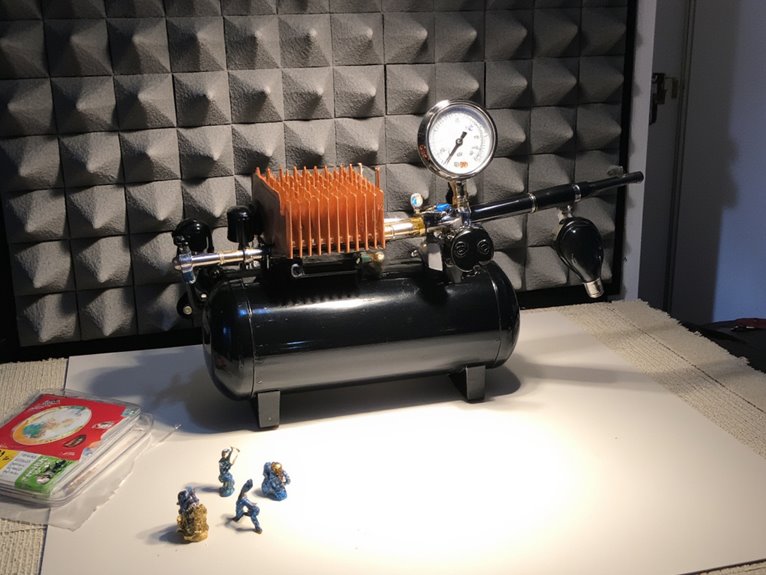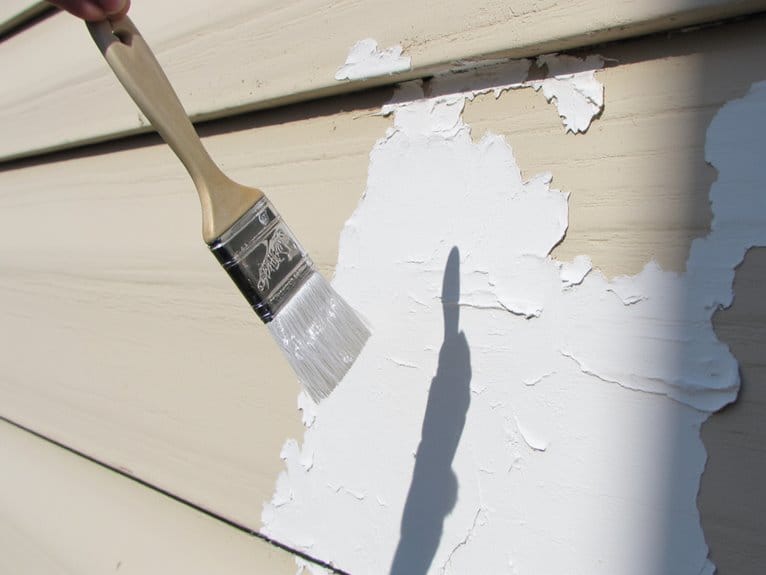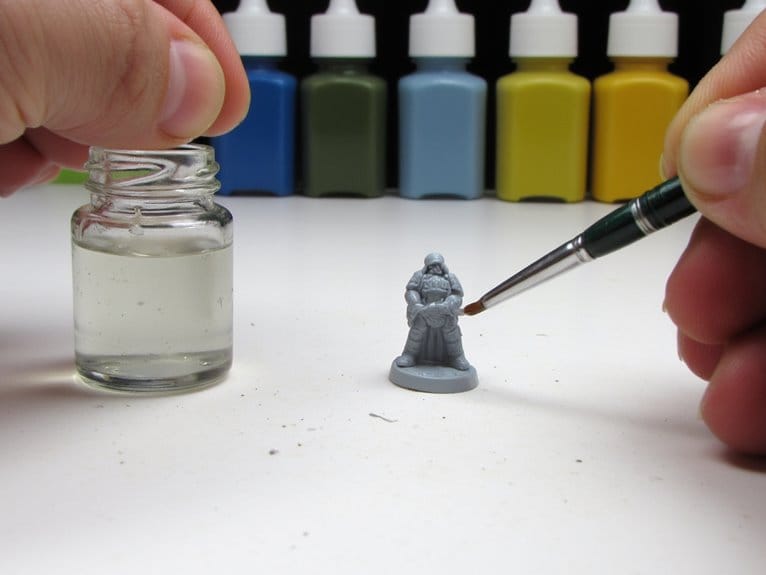We are supported by our audience. When you purchase through links on our site, we may earn an affiliate commission, at no extra cost for you. Learn more. Last update on 1st July 2025 / Images from Amazon Product Advertising API.
You’ll need a compressor delivering 15-35 PSI with consistent airflow for miniature painting precision. Choose double piston or tank-equipped models like the Master Airbrush AS186 for beginners or Sparmax TC-610H for intermediate work. Essential features include adjustable pressure regulators, moisture traps, and sub-60 decibel operation. Budget $100-$300 for mid-range units with 1-6 liter tanks that reduce pulsing and motor cycling. Match your PSI to painting style—20-25 PSI works best for standard detail work, while base coating requires higher pressure. The specifications below reveal how each feature impacts your painting results.
Notable Insights
- Choose compressors with 15-35 PSI pressure range and adjustable regulators for optimal paint flow control in miniature work.
- Select tank-equipped models (1-6 liters) to stabilize airflow, reduce pulsing, and minimize motor cycling during continuous painting sessions.
- Prioritize noise levels below 60 decibels and oil-free piston compressors to ensure comfortable extended use without paint contamination.
- Include moisture traps and built-in pressure gauges for precise PSI control and prevention of water-related spray pattern disruptions.
- Budget $100-$300 for mid-range units offering tanks and pressure regulation, avoiding entry-level models under $50 with limited durability.
Understanding Different Compressor Types for Miniature Work
When selecting an airbrush compressor for miniature painting, you’ll encounter three primary types that each offer distinct advantages and limitations.
Diaphragm compressors use flexing membranes to generate compression, producing pulsing airflow that works well with gravity feed airbrushes. They’re affordable but require tanks for steady output.
Diaphragm compressors offer budget-friendly compression through flexing membranes but need tanks to eliminate pulsing airflow for consistent performance.
Single and double piston compressors compress air through reciprocating cylinder motion. Single piston models are quieter with limited output, while double piston versions deliver consistent pressure. Double piston designs also produce less noise during operation compared to their single piston counterparts.
Tank-equipped compressors include air reservoirs that stabilize flow and reduce pulsing. Hobbyist compressors are generally sold as plug-and-go options, making them economical and straightforward for newcomers to the hobby.
These compressor comparisons reveal noise levels, airflow consistency, and price vary considerably between types. Understanding airbrush compatibility requirements helps determine whether diaphragm, piston, or tank models suit your miniature painting needs best. Proper surface preparation ensures paint adhesion and prevents peeling when applying base coats to your miniatures.
Essential Specifications That Matter for Detail Painting
The specifications you choose will directly determine your success with fine detail work on miniatures. Pressure range stands as your most critical consideration, with gravity feed airbrushes requiring 15-25 PSI and siphon feed models needing 20-35 PSI for ideal paint quality.
| Specification | Requirement | Impact on Performance |
|---|---|---|
| Pressure Range | 15-35 PSI | Controls paint flow precision |
| Tank Capacity | 1-6 liters | Reduces motor cycling frequency |
| Noise Level | <60 decibels | Minimizes workspace disruption |
Look for adjustable regulators with pressure gauges for custom setups. Air tanks provide essential pressure stability by smoothing motor pulses. Moisture traps prevent water contamination that disrupts spray patterns. Quiet operation below 60 decibels reduces fatigue during extended sessions. Single piston compressors offer the quietest performance while remaining affordable for hobby use. Models with dual cooling fans help prevent overheating during extended painting sessions, ensuring consistent performance throughout your project. Remember that your operating pressure observed on the gauge will drop once you activate the airbrush, so choose compressors with sufficient power to maintain consistent pressure. These specifications directly impact your ability to achieve consistent, professional results.
Key Features to Look for in Miniature Painting Compressors
Beyond basic pressure requirements, several vital features distinguish exceptional compressors from adequate ones for miniature work. You’ll want built-in pressure gauges and regulators for precise 10-40 PSI control.
Twin-piston designs operate quieter than single-piston units, with models under 60 decibels being ideal for extended sessions. Tank capacity of 2.5 liters or higher provides stable airflow and reduces motor cycling. This prevents pressure drops during continuous spraying while minimizing noise bursts. Choose oil-free piston compressors to avoid paint contamination.
Compressor portability becomes essential if you attend workshops or gaming events. Balance this with functionality—compact units may sacrifice features.
Metal construction outlasts plastic components considerably. Easy-access air filters and simple tank maintenance procedures extend operational lifespan. Premium models include vibration dampening for enhanced quiet operation. Look for dual pressure modes that allow versatility between fine detail work and broader coverage applications. Consider models with auto-off function to create a more relaxing airbrushing environment by significantly reducing compressor noise when the unit isn’t actively in use. Installing a moisture trap prevents water contamination from reaching your paint and ensuring clean, consistent spray patterns.
Top Brand and Model Recommendations by Experience Level
Selecting your first airbrush compressor requires matching equipment capabilities to your current skill level and painting frequency. Following proper beginner guidelines, you’ll want to start with Master Airbrush compressor brands, particularly the AS186 model. This unit offers sufficient performance for casual hobbyists at an affordable price point.
For intermediate painters, the Sparmax TC-610H provides up to 60 psi working pressure with a 2.5-liter tank capacity. It includes pressure gauges and regulation controls for developing precision techniques. Most miniature painters work optimally within the 20-25 psi range for standard airbrush paints. Compressors must consistently maintain an airflow capacity of 0.5-0.8 CFM to ensure proper paint atomization and smooth application.
Professional-level painters should consider the Iwata Power Jet Pro. This top-tier compressor features multiple pistons for faster compression and supports simultaneous multi-airbrush operation. Its large tank capacity guarantees consistent airflow during extended studio sessions.
For noise-sensitive environments, the Paasche D3000R delivers quiet operation with vibration isolation features.
Budget Planning and Cost Considerations
After identifying suitable compressor models for your skill level, determining your total budget becomes your next priority.
Effective budget categories should allocate 40-60% toward the compressor and airbrush combination. Reserve 20-30% for essential accessories like hoses, fittings, and cleaning supplies.
Allocate 40-60% of your budget to the compressor-airbrush combo, with 20-30% reserved for essential accessories and supplies.
Your cost analysis must include hidden expenses beyond the initial purchase. Entry-level compressors under $50 deliver only 15 psi and poor durability. Mid-range units ($100-$300) provide tanks and pressure regulation for steady performance. Professional-grade compressors exceed $600 but offer quiet operation and enhanced longevity.
Factor in ongoing maintenance costs including replacement filters, regulator seals, and cleaning products. These expenses can match your initial compressor investment.
Plan for potential upgrades within 1-2 years when starting with economy models.
Matching PSI Requirements to Your Painting Style
Understanding your airbrush’s best PSI range directly impacts your painting precision and coverage quality.
Gravity feed airbrushes typically require 15-25 PSI for detailed miniature work, while siphon feeds need 20-35 PSI for consistent flow. Your painting techniques determine prime pressure settings. Base coating benefits from higher PSI (>30 PSI) for faster coverage, medium pressure (20-30 PSI) suits layering and shading, while detailed effects demand lower settings (<20 PSI).
Effective pressure modulation during sessions allows varied textures and finishes. Some specialized models function at extremely low pressures (5-6 PSI) for ultra-fine stippling.
Many painters standardize at 2-3 bar (~29-44 PSI), making PSI adjustments based on paint viscosity and desired effects.
Dynamic pressure control prevents clogging while ensuring smooth application across different miniature painting styles. Cordless airbrush models offer enhanced portability for miniature painters working in small spaces or requiring flexible positioning during detailed work sessions.
Tank Size Vs Portability Trade-Offs
When selecting an airbrush compressor, you’ll face a fundamental trade-off between tank size benefits and portability requirements.
Large tanks (2+ liters) provide steadier air pressure and quieter operation through motor cycling, but they greatly increase weight and reduce transportability for your workspace setup.
Conversely, portable compressors with small tanks (0.3 liters) or tankless designs offer excellent mobility and desk-friendly sizing, though you’ll sacrifice some pressure stability and accept continuous motor noise during painting sessions.
Large Tanks Benefits
Large air tanks deliver substantial performance enhancements that often outweigh their portability limitations for serious miniature painters.
You’ll experience dramatically improved pressure stability, eliminating the pulsation that causes streaky paint application on delicate details. The motor cycles on and off rather than running continuously, extending compressor lifespan while reducing noise during extended painting sessions.
Moisture control becomes markedly better with larger tanks. Compressed air has time to cool and condense water vapor before reaching your airbrush, preventing paint consistency issues and equipment clogs.
This improved air quality translates directly to smoother finishes on your miniatures.
Your compressor motor operates more efficiently, drawing less power and generating less heat. For dedicated painters working on complex projects, these benefits justify the increased size and cost investment.
Portable Compressor Advantages
While large tanks offer superior performance, portable compressors deliver compelling advantages that make them the preferred choice for many miniature painters who value flexibility and convenience.
Their compact design weighs under 2 pounds, enabling easy portability to conventions and workshops. Cordless convenience eliminates hose requirements and complex setups.
You’ll appreciate the creative flexibility these units provide. Quick setup lets you paint spontaneously in kitchens or living rooms where larger systems won’t fit. Travel friendliness becomes essential for mobile painters attending events.
Lightweight options generate adequate pressure up to 35 PSI for priming and detail work. Their versatile use suits casual painters who prioritize mobility over extended sessions.
The simplified design reduces maintenance complexity while delivering sufficient performance for hobbyist applications.
Noise Control Solutions for Home Studios

When you’re airbrushing miniatures in your home studio, compressor noise can quickly become a major issue for both you and anyone else in the house.
You’ll want to evaluate two primary approaches: investing in an inherently quiet compressor model or implementing sound dampening techniques around your existing equipment.
Models like the Sparmax TC-620X and Iwata Power Jet Lite operate below 60 dB, while acoustic foam enclosures and vibration-absorbing mats can reduce noise from louder compressors by 20-30 dB.
Silent Compressor Options
Noise control becomes critical once you’ve set up a home studio for miniature painting, as standard compressors can disrupt household activities and disturb neighbors.
Silent operation requires specific engineering features that maintain compressor stability without sacrificing performance.
Professional models like the Master Airbrush TC-77 feature built-in air tanks that eliminate pulsation while reducing motor cycling frequency.
The Silentaire DR 150 achieves virtually noiseless operation through sound-insulated motor housings and vibration dampeners. These units typically operate under 40 decibels during normal load conditions.
Direct-drive compressors with 1/8 horsepower motors produce considerably less noise than piston-driven alternatives.
Variable pressure systems that activate only on trigger press further reduce idle noise.
When selecting silent compressors, verify specifications include moisture traps and auto-cooling cycles to maintain consistent airflow without compromising your studio’s quiet environment.
Sound Dampening Techniques
Beyond purchasing silent compressors, you can dramatically reduce existing unit noise through strategic environmental modifications that address both airborne sound and structural vibration transmission.
Sound absorption materials form your first line of defense. Heavy carpets, thick drapes, and upholstered furniture absorb airborne compressor noise effectively. Dense acoustic foam underlayments and felt pads provide superior absorption of machinery sounds.
Structural modifications increase isolation by adding mass to walls through additional drywall layers. Seal gaps around doors with weatherstripping and install door sweeps to prevent sound leakage.
Key noise control solutions:
- Position compressors on vibration-isolating mats to reduce floor transmission
- Build wooden enclosures lined with acoustic foam around units
- Use flexible hoses instead of rigid pipes to minimize vibration transfer
Balance accessibility requirements with cooling airflow when implementing these techniques.
Maintenance Tips for Long-Term Performance
Proper maintenance forms the foundation of reliable airbrush compressor operation and can extend your equipment’s lifespan by several years.
Regular maintenance prevents costly breakdowns and guarantees consistent performance during critical painting sessions. Release air pressure after each use to prevent moisture buildup. Check and empty moisture traps regularly to avoid water contamination in your paint lines. Drain the tank completely through the main release valve, allowing trapped water to escape.
Monitor compressor temperature during extended sessions. Position your unit in well-ventilated areas and avoid blocking air vents. Maintain 30 PSI pressure settings for peak performance without excessive wear.
Clean airbrush connections routinely and inspect seals for leaks. Replace worn components promptly to prevent cascading failures.
Establishing consistent compressor longevity practices protects your investment and maintains professional-quality results.
On a final note
You’ll achieve consistent miniature painting results by matching your compressor’s specifications to your specific requirements. Prioritize tank capacity over 3 gallons for detail work, maintain 15-35 PSI operating pressure, and select models with moisture traps. Budget between $150-400 for reliable performance. Consider noise levels under 60dB for home studios. Regular maintenance extends compressor life considerably. Your painting style determines ideal CFM requirements and portability needs.


